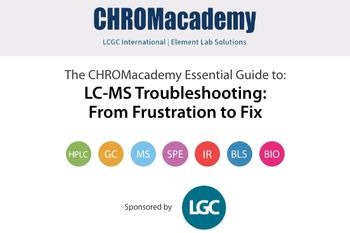
Novel Analytical Method Detects Pesticide Residues in Livestock Urine
Using LC–MS in conjunction with QuEChERS extraction was demonstrated in this study to have the ability to monitor pesticide pollution in livestock breeding.
Livestock breeding is a vital component to animal husbandry, one of the main disciplines of agricultural science — and farmers need better ways to monitor the impact of pesticides on their animals.
A research team from Shihezi University comprised of four scientists recently conducted a study that explores the use of a new chromatographic method for real-time monitoring of pesticide pollution in livestock breeding (1). This new method, which utilizes a modified QuEChERS (Quick, Easy, Cheap, Effective, Rugged, and Safe) extraction coupled with liquid chromatography–tandem mass spectrometry (LC–MS/MS), was able to accurately identify and quantify pesticide residues (1). Their study's findings were published in the Journal of Chromatography A, which outlines how their new method detected 106 pesticide residues in livestock urine (1).
The research team tested their method by using acetonitrile for extraction. By using acetonitrile this way, their method could handle the acidic and alkaline conditions in the sample environment that was set up, ensuring that comprehensive analysis was done using their method for more accurate results (1).
The team evaluated various materials for purification efficiency, selecting PSA, C18, and PEP from a range of 20 adsorbents for QuEChERS (1). This careful selection contributed to the robustness of the method, optimizing sample purity, and enhancing precision in pesticide residue detection.
The analytical process employed simultaneous scanning in positive and negative ion modes, coupled with multiple reaction monitoring (MRM) mode, allowing for the swift and accurate analysis of the 106 compounds within a concise 15-min timeframe (1).
Once the efficacy of their method was deemed satisfactory, the research team applied it to several livestock urine samples that were collected from farms in Xinjiang, China. They detected eight pesticides in swine and bovine urine, with concentrations varying from trace amounts to 22.4 ng/mL. Clothianidin, thiamethoxam, and dinotefuran emerged as the top three pesticides frequently detected in the samples (1).
The team also investigated the pesticide residue levels by performing an exposure assessment. By doing so, the research team discovered that the detected pesticides contained minimal risk to pigs and cattle, which provided reassurance regarding potential health hazards (1).
This article was written with the help of artificial intelligence and has been edited to ensure accuracy and clarity. You can read more about our
Reference
(1) Su, Y.; Lu, J.; Li, F.; Liu, J. Establishment of a Modified QuEChERSExtraction and Liquid Chromatography-Tandem Mass Spectrometry Method for Multiple Pesticide Residues Followed by Determination of the Residue Levels and Exposure Assessment in Livestock Urine. J. Chromatogr. A. 2024, 1714, 464547. DOI:
Newsletter
Join the global community of analytical scientists who trust LCGC for insights on the latest techniques, trends, and expert solutions in chromatography.




